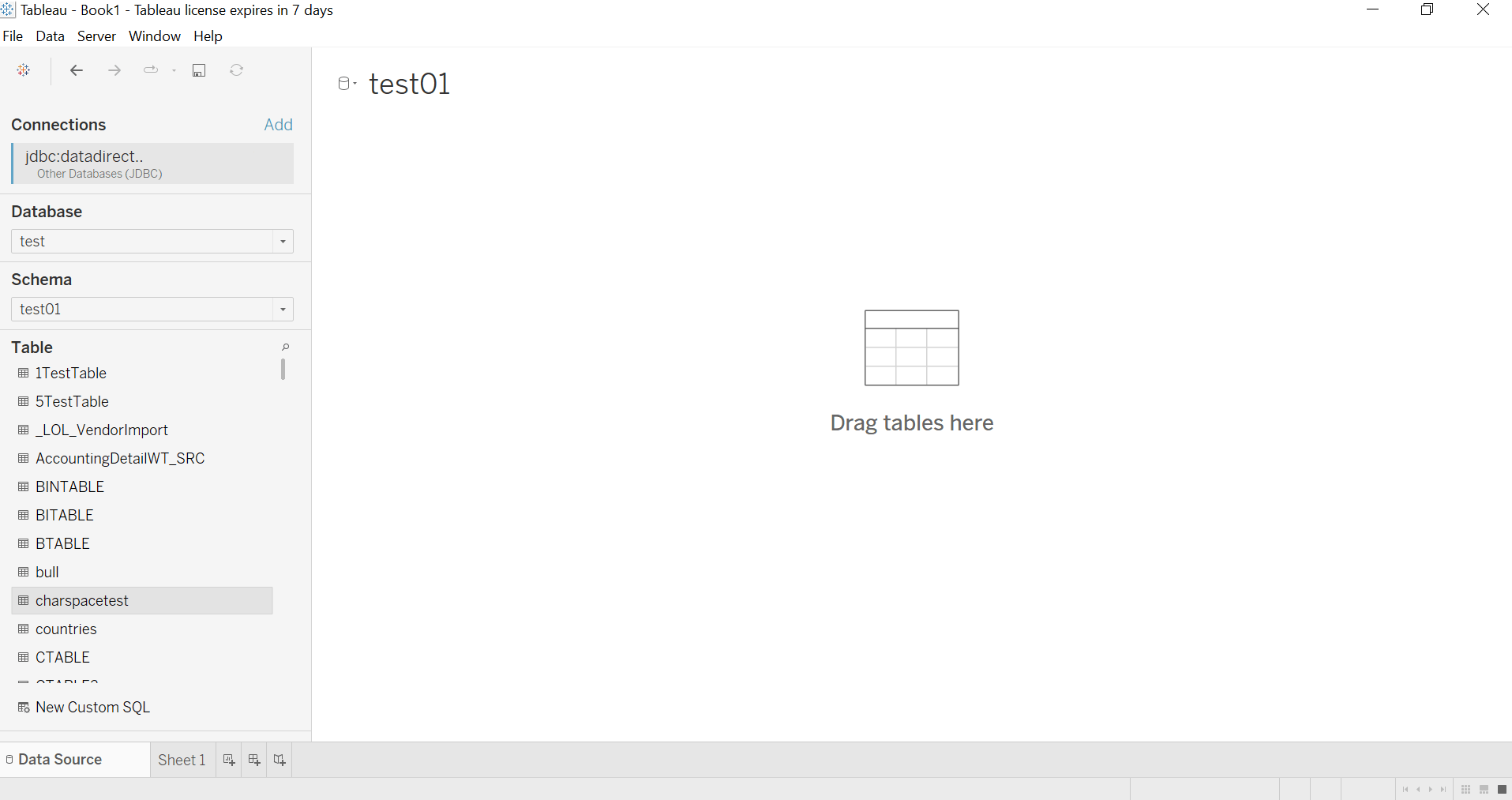How to Build Tableau reports on SQL Server Data using the DataDirect SQL Server Driver for JDBC
Introduction
Download and Install the JDBC driver
1. Download and install the Progress DataDirect SQL Server JDBC driver using the 15-day trial software. In this tutorial, we are connecting to Microsoft SQL Server.
2. Installing the driver:
- If you are on Windows, extract the PROGRESS_DATADIRECT_JDBC_SQLSERVER_WIN.zip and run the PROGRESS_DATADIRECT_JDBC_INSTALL.exe to install the JDBC driver.
- If you are on Linux, extract the PROGRESS_DATADIRECT_JDBC_SQLSERVER_WIN.zip and run the PROGRESS_DATADIRECT_JDBC_INSTALL.jar to start the installation.
3. After you have completed the installation, you can find the Progress DataDirect SQL Server .jar file.
- On Windows, you will find it at C:\Program Files\Progress\DataDirect\JDBC_60\lib\sqlserver.jar
- On Linux, you will find it at /home/
/Progress/DataDirect/JDBC_60/lib/sqlserver.jar
Connecting Tableau to SQL Server Database
1. To get started, copy sqlserver.jar from the Progress install location to Tableau’s driver location.
- For Windows: copy sqlserver.jar to C:\Program Files\Tableau\Drivers
- For Mac: copy sqlserver.jar to ~/Library/Tableau/Drivers
2. Open Tableau and create a new data source.
- Select “Other Databases (JDBC).

- The pop-up window will appear.

- Paste the JDBC connection string that you have built into the “URL” textbox. The URL will look something like jdbc:sqlserver://localhost; databaseName=TestDB; user=Username; password=Password;
- Enter credentials for username and password, and click on “Sign In.”

3. Tableau will then connect to the SQL Server database, and the Configuration Screen will appear.

4. You can use Tableau's schema and table drop-down list to browse and select your data, or you can execute SQL statements by clicking on the "New Custom SQL" option. The image below shows the schemas on the left-hand side.

5. Once Tableau can access your relevant data, you can easily create reports like those shown below:

Conclusion
We hope this tutorial helped you to get started with the Progress DataDirect JDBC SQL Server Driver. Please feel free to contact us if you have any questions about using the driver and we will be happy to help you. you have any questions about using the driver we will be happy to help you.